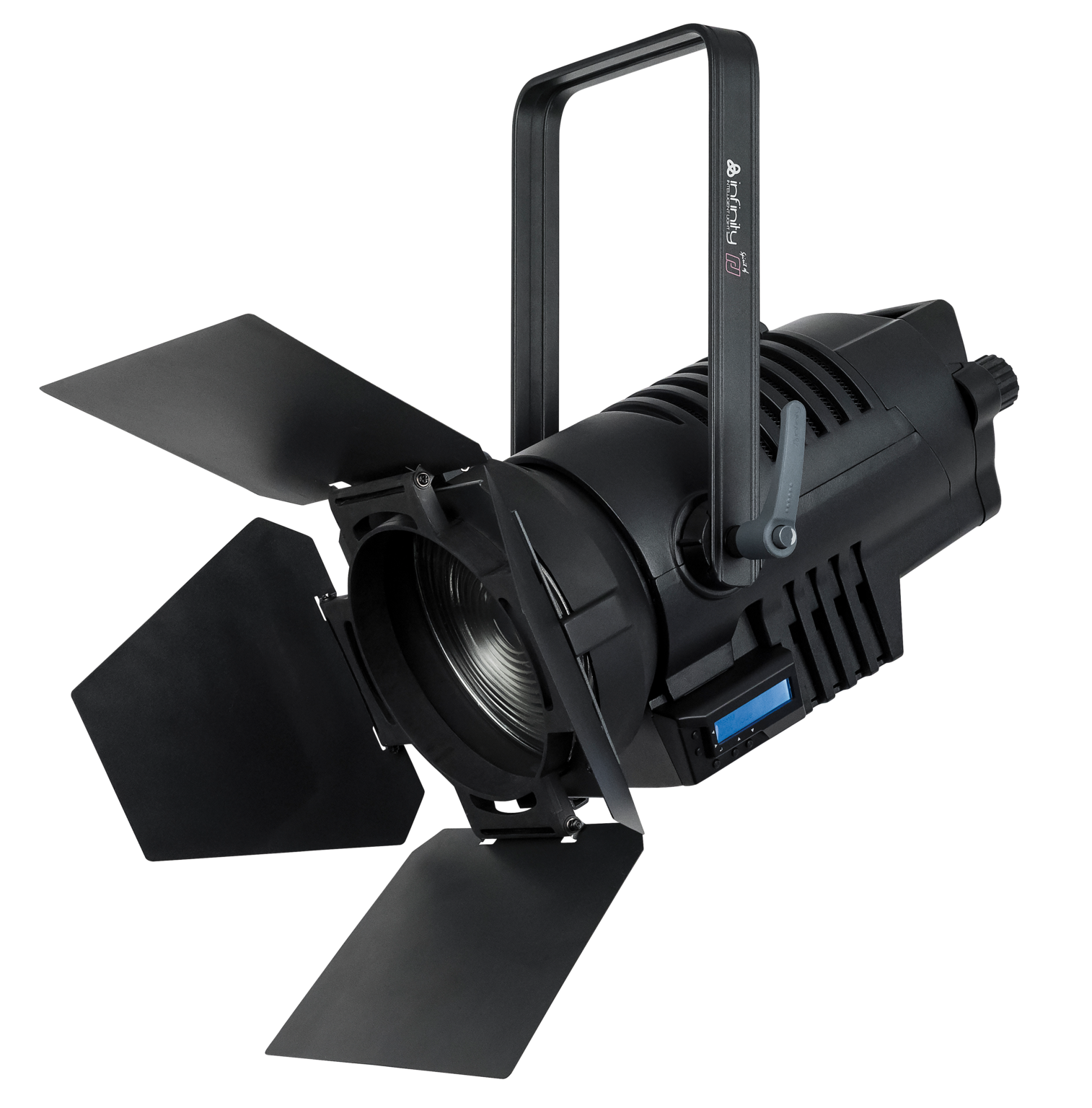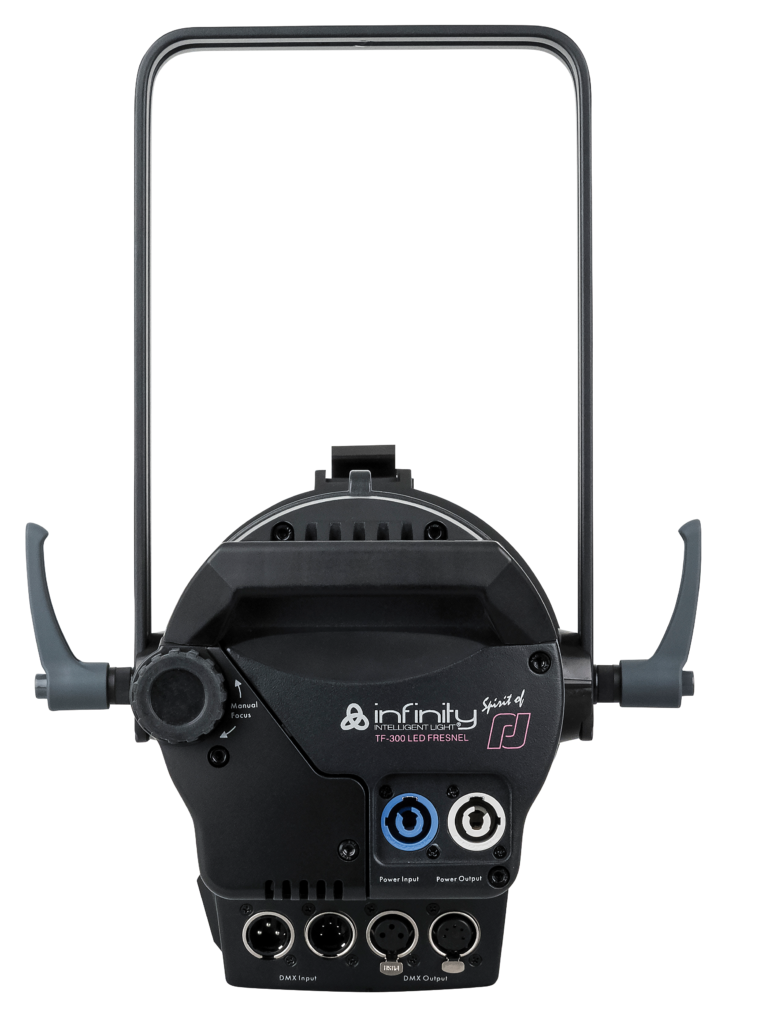News
4 Oct 2021
Road Test: Highlite Infinity TF260C7 Fresnel

Subscribe to CX E-News
Melbourne based Lighting Designer and technician John Collopy got bitten by the lighting bug in high school, operating followspot on the school musical. He worked on lighting designs through university, and after graduation started working in the independent arts sector in Melbourne, LD-ing and teching for theatre, dance, opera, and circus.
I had an existing relationship with Australian Highlite distributor Clearlight, who recently started hiring Infinity fixtures out. I tried out the Highlite Infinity TF260C7 Fresnel on a couple of my shows, and found it to be punchy, with wonderful colours, projecting an even field of light across the whole beam, which is what you want in a Fresnel. It’s a significant improvement on some of the LED pars I’ve used for the same types of jobs.
The Infinity TF260C7’s output is comparable to a traditional 1K Fresnel, like a Rama. The light field is flat, and in fact feels flatter across the beam as a whole than a traditional fixture. The optics perform well at both wide and narrow zoom.
I’ve been using the Infinity TF260C7s on smaller shows, where it’s been great to have a two or three colour backlight. Instead of putting up three times the traditional fixtures with gels, I can just put up a couple of Infinity TF260C7s and get everything I need. Having the ability to zoom means I can shift between a flood and a spot if necessary. In terms of bang for buck, the Infinity TF260C7s really perform as a colour wash.
Colour
The TF260C7s are a slight innovation on seven colour source LED engines – RGBCALDB, with the DB standing for Deep Blue. I’ve seen great results with the orange, cyan, and amber. In the blues, you’re mixing cyan, blue, and deep blue, which creates rich blues with depth. On some LED pars, I’ve found you can bring up Tokyo or Congo, and you’re just getting the blue chip at 100 and everything else at zero. The TF260C7s really give you subtlety in your colours. The gel matching is spot on, and the built-in colour wheel helps you create depth in whatever colour you’re trying to achieve.
Whites
The quality of white light the TF260C7s produce is very pleasing. It’s adjustable from 2000K to 8000K. I dialled in 5600K and it was extremely close to what I’d expect from traditional Lee 201. At 2700K, which is the fixture’s default setting, it’s extremely warm, and as such, the pastels it produces are really great.
Control
I was using the TF260C7s recently as a technician and the LD asked what control mode I usually run them in. As a habit, I run them in full 21 channel extended mode, because I want the most control. On that gig, that would mean adding another DMX Universe, so we decided to run them in 11 channel mode, and to be honest, I couldn’t tell the difference. Whatever they’re doing internally in terms of control processing is impressive.
When I’m LD, I’m running off of my ETC Nomad rig, so I’m not using encoders to dial in colours, I’m picking from a gel palette. This means I’m particularly interested in what the desk thinks in terms of matching a Lee or Rosco colour. The libraries available for the TF260C7 are pretty good and play nicely with my set-up. They have their own colour wheel, so if you want to pick something out manually, you can make it match.
As for the dimming curves, they’re smooth and particularly nice on the bottom end. Occasionally when you use LED fixtures in a mixed rig and you snap to black, somehow the tungsten is out before the LED due to the default LED curve some manufacturers add. The Infinity TF260C7 is much snappier, and I haven’t had that issue.
Manual Handling and Build
At just over 8 kg, the TF260C7 is heavier than a conventional Fresnel. They feel seriously robust. When rigging, they feel front-heavy, but they have double lock-offs. I’d like to see a zoom degree marker on the barrel for when you’re doing manual adjustments, but Highlite are trying to steer you to using the desk for the zoom settings. What I did find funny was that the TF260C7 ships with a square gel frame. I guess some people might want to put some diffusion in front of it?
Improvements and Changes
I haven’t really used the motorised zoom during a show, but I have played with the manual adjustment when focussing and it’s very slow. The zoom wheel on the back of the fixture requires three or four full revolutions before you really see any change in the beam. As I said before, it’s pretty obvious they’d much prefer you to set the zoom via the desk. At full zoom extension, the lens is around 15 centimetres out of the barrel, so it’s a significant range of movement.
I’m honestly not sure if I like or don’t like where the control screen is placed, which is on the side of the fixture instead of the rear. On the one hand, it’s nice that you don’t have to be behind the fixture to change a setting, but if you’re focussing, that’s where you’re likely to be anyway. It’s actually a nice innovation, but I guess I’m just used to it being on the back!
I don’t think the barndoors are quite as effective in some parts of the zoom range as traditional Fresnels. At full flood and full zoom they behave as expected, but there are points in between where they’re a little less effective than normal doors.
In Situ
One of the venues I work at has recently purchased six TF260C7s. The venue has a grid seven metres above stage. At full flood, the TF260C7s are really, really punchy. The traditional 1K Fresnels at the venue are now being totally outclassed. Most of the rig has already been converted to LED, so hopefully there’ll be the budget to purchase some more TF260C7s this financial year.
Service and Support
The customer service from Highlite distributor Clearlight Shows is excellent. They’re lovely to deal with, and I know I’m always getting what I need. Through all of the COVID disruptions, they’ve been flexible with the constantly changing arrangements. Clearlight have become my go-to, and I use them for everything.
Product Info: www.highlite.com
Distributor Australia: clearlight.com.au
Distributor New Zealand: kelpls.co.nz

Infinity TF260C7 Fresnel – The Specs
Source
Light Source Type – LED
Light Source Quantity – 7
Light Source Power – 260W
LED Colour Type – RGBCALDB
Life Expectancy – 30,000 Hours
Lumen Total – 3500
CRI – 96
CCT Minimum – 2000K
CCT Maximum – 8000K
Colour System
Colour Wheel CMY+CTO
CMY & CTO Resolution – 8 bit
Optical
Beam Angle Circular (min) – 15 degrees
Beam Angle Circular (max) – 50 degrees
Zoom Type – Motorised
Control and Programming
Control Mode – DMX, Manual
DMX Channels – 1, 6, 7, 11, 21
Protocols – DMX, RDM
Display – LCD
Dim Curve – Linear, Square, S-Curve
Dimmer Resolution – 16 bit
Zoom Resolution – 8 bit
Mechanical Specifications
L 474mm, W 322mm, H 457mm
Weight 8.3kg
Subscribe
Published monthly since 1991, our famous AV industry magazine is free for download or pay for print. Subscribers also receive CX News, our free weekly email with the latest industry news and jobs.




